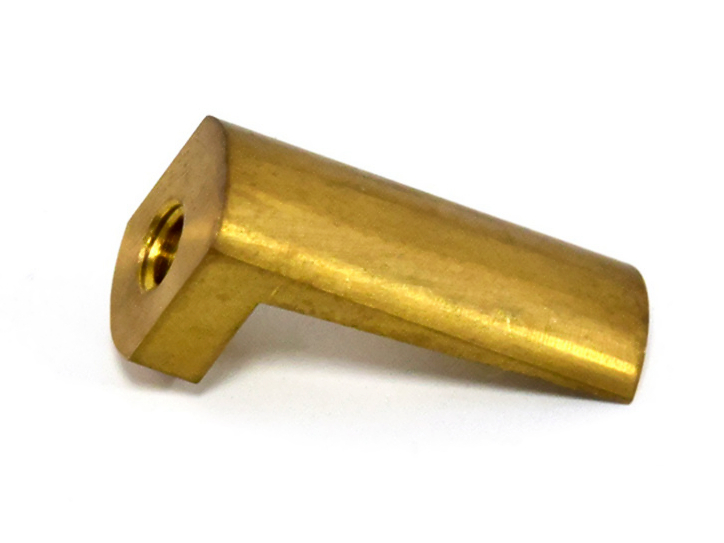Precision CNC Milling of Bronze Parts for Agricultural Machinery Applications
Introduction: Demanding Durability in Harsh Environments
Agricultural machinery operates under extreme conditions—from abrasive soil particles to corrosive fertilizers. Components like tillage blades, hydraulic valve bodies, and combined harvester bearings require materials that balance wear resistance, corrosion tolerance, and machinability. Bronze alloys, with their self-lubricating properties and high fatigue strength, have become critical for extending equipment service life by 40-60% compared to standard carbon steel.
Advanced multi-axis CNC milling enables the production of bronze parts with ±0.01mm tolerances, ensuring precise fitment in complex assemblies like gearboxes and pivot joints. Combined with precision surface treatments, these components withstand over 10,000 hours of continuous operation in dusty, high-moisture environments.
Material Selection: Optimizing Bronze Alloys for Farm Equipment
Agricultural Bronze Alloy Matrix
Material | Key Metrics | Ideal Applications | Limitations |
|---|---|---|---|
380 MPa UTS, 22% Pb content | Bushings, thrust washers | Limited to <120°C operation | |
760 MPa UTS, 11% Al, 4% Fe | Gears, hydraulic valve bodies | Requires slow machining speeds | |
690 MPa UTS, 25% Zn, 5% Mn | High-load shafts, tillage linkages | Prone to dezincification | |
310 MPa UTS, 10% Sn | Seals, bearing retainers | Low impact toughness |
Material Selection Protocol
High-Wear Components:
Primary: C95400 for >150% wear resistance vs. standard bronze.
Alternative: C93200 with nitriding (extends lifespan by 2x).
Corrosive Environments:
Optimal: C86300 with alodine coating.
Budget: C90700 + passivation (ISO 3651-2 compliance).
CNC Machining Process Optimization
Process Selection Framework
Process | Technical Specifications | Material Compatibility | Advantages |
|---|---|---|---|
0.005mm true position, 10,000 RPM | C95400, C86300 | Complex gear tooth profiles in single setup | |
30:1 L/D ratio, 0.05mm straightness | C93200, C90700 | Precision lubrication channels | |
M24-M60 threads, 0.01mm pitch error | All bronze alloys | High-speed threading for harvesters | |
-50°C CO2 cooling | C95400 (prevents work hardening) | Eliminates built-up edge |
Process Matching Guidelines
Tractor Hydraulic Valves:
Step 1: 5-axis roughing with carbide tools (1mm stock).
Step 2: Deep hole drilling for fluid passages.
Step 3: Electroless nickel plating for corrosion resistance.
Combine Harvester Gears:
Stage 1: Cryogenic machining of C95400 blanks.
Stage 2: Hard milling for 55-60 HRC surfaces.
Stage 3: Laser hardening of tooth profiles.
Surface Engineering: Enhancing Field Performance
Agricultural Surface Treatment Comparison
Process | Technical Parameters | Key Applications | Standards |
|---|---|---|---|
50-100μm thickness, 500-700 HV | Fertilizer spreader components | ASTM B733 Class 4 | |
2-5μm layer, >500h salt spray | Pivot joints, tillage blades | ISO 9717 | |
15-20% porosity retention | Self-lubricating bushings | SAE AMS 2530 | |
1-3μm thickness, 0.2 friction coeff. | Decorative/exposed parts | MIL-DTL-13924 |
Selection Guidelines
Abrasion Resistance:
Optimal: HVOF tungsten carbide coating (3x lifespan).
Cost-Effective: Electroless nickel + PTFE infusion.
Chemical Exposure:
Primary: Phosphating + epoxy topcoat (resists urea/ammonia).
Quality Control: Farm-Ready Validation
Multi-Stage Inspection Protocol
Stage | Critical Parameters | Methodology | Standards |
|---|---|---|---|
Raw Material | Cu/Sn/Pb ratios, porosity | XRF, metallography | ASTM B505 |
In-Process | Wall thickness (±0.1mm) | Ultrasonic testing | ISO 4382 |
Post-Machining | Surface hardness (HB scale) | Brinell indentation | ISO 6506 |
Field Simulation | 50km cyclic dust/water exposure | Accelerated test chamber | SAE J2030 |
Compliance & Traceability
ISO 9001:2015 certified process controls.
AGCO/John Deere supplier standards compliance.
Industry Applications
Planter Row Units: C86300 bushings with oil impregnation (20% friction reduction).
Sprayer Nozzles: C95400 valves + electroless nickel (zero corrosion after 5 seasons).
Harvester Gearboxes: C93200 thrust washers with phosphating (3000h MTBF).
Conclusion
Precision-machined bronze components, enhanced with tailored surface treatments, reduce agricultural equipment downtime by 35% while maintaining 0.05mm operational tolerances across 10,000+ service hours.
FAQ
Why choose bronze over steel in fertilizer environments?
How does oil impregnation enhance bushing performance?
What coating best resists ammonia corrosion?
How to validate bronze part porosity for hydraulic systems?
Can CNC bronze parts meet AGCO specifications?

